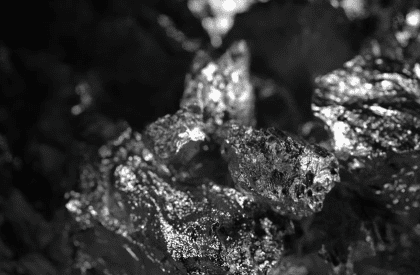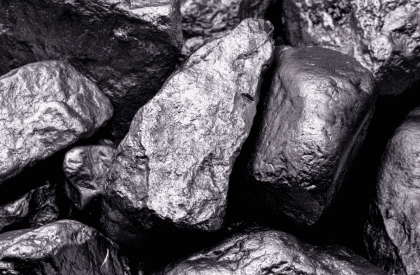Manganese
-
Carbon
Carbon
-
Copper
Copper
-
Tantalum
Tantalum
-
Coltan
Coltan
-
Magnetite Iron
Magnetite Iron
-
Manganese
Manganese
-
Graphite
Graphite
Our Brochures
Contact Us
Social Media


Manganese is a chemical element with the symbol Mn and atomic number 25. It is a hard, brittle, silvery metal, often found in minerals in combination with iron. Manganese is a transition metal with a multifaceted array of industrial alloy uses, particularly in stainless steels. It improves strength, workability, and resistance to wear. Manganese oxide is used as an oxidising agent; as a rubber additive; and in glass making, fertilisers, and ceramics. Manganese sulfate can be used as a fungicide.
Manganese Characteristics
Manganese is a silvery-gray metal that resembles iron. It is hard and very brittle, difficult to fuse, but easy to oxidize. Manganese metal and its common ions are paramagnetic. Manganese tarnishes slowly in air and oxidizes (“rusts”) like iron in water containing dissolved oxygen. Naturally occurring manganese is composed of one stable isotope, 55Mn. Several radioisotopes have been isolated and described, ranging in atomic weight from 46 u (46Mn) to 72 u (72Mn).
Alpha manganese (α-Mn) is the equilibrium phase at room temperature. It has a body-centered cubic lattice and is unusual among elemental metals in having a very complex unit cell.It is paramagnetic at room temperature and antiferromagnetic at temperatures below 95 K (−178 °C)
Beta manganese (β-Mn) forms when heated above the transition temperature of 973 K (700 °C; 1,290 °F). It has a primitive cubic structure with 20 atoms per unit cell at two types of sites, which is as complex as that of any other elemental metal.
Gamma manganese (γ-Mn) forms when heated above 1,370 K (1,100 °C; 2,010 °F). It has a simple face-centered cubic structure.
Delta manganese (δ-Mn) forms when heated above 1,406 K (1,130 °C; 2,070 °F) and is stable up to the manganese melting point of 1,519 K (1,250 °C; 2,270 °F). It has a body-centered cubic structure (two atoms per cubic unit cell).Chemical CompoundsOrganomanganese CompoundsCommon oxidation states of manganese are +2, +3, +4, +6, and +7, although all oxidation states from −3 to +7 have been observed.Potassium permanganate is a commonly used laboratory reagent because of its oxidizing properties; it is used as a topical medicine (for example, in the treatment of fish diseases).Solutions of potassium permanganate were among the first stains and fixatives to be used in the preparation of biological cells and tissues for electron microscopy.Manganese forms a large variety of organometallic derivatives, i.e., compounds with Mn-C bonds.The organometallic derivatives include numerous examples of Mn in its lower oxidation states, i.e. Mn(-III) up through Mn(I).This area of organometallic chemistry is attractive because Mn is inexpensive and of relatively low toxicity.Manganese Properties
Manganese is a silvery-gray metal that resembles iron. It is hard and very brittle, difficult to fuse, but easy to oxidize. Manganese metal and its common ions are paramagnetic. Manganese tarnishes slowly in air and oxidizes (“rusts”) like iron in water containing dissolved oxygen.
Parameter
Phase At STP
Melting Point
Boiling Point
Density, (near r.t.)
When Liquid (at m.p.)
Heat Of Fusion
Heat Of Vaporization
Molar Heat Capacity
Oxidation States
Electronegativity
Ionization Energies
Atomic Radius
Covalent Radius
Typical analysis (%)
Solid
1519 K (1246 °C, 2275 °F)
2334 K (2061 °C, 3742 °F)
7.21 g/cm3
5.95 g/cm3
12.91 kJ/mol
221 kJ/mol
26.32 J/(mol·K)
−3, −2, −1, 0, +1, +2, +3, +4, +5, +6, +7 (depending on the oxidation state, an acidic, basic, or amphoteric oxide)
Pauling scale: 1.55
1st: 717.3 kJ/mol
2nd: 1509.0 kJ/mol
3rd: 3248 kJ/mol
Empirical: 127 pm
Low Spin: 139±5 pm
High Spin: 161±8 pm
